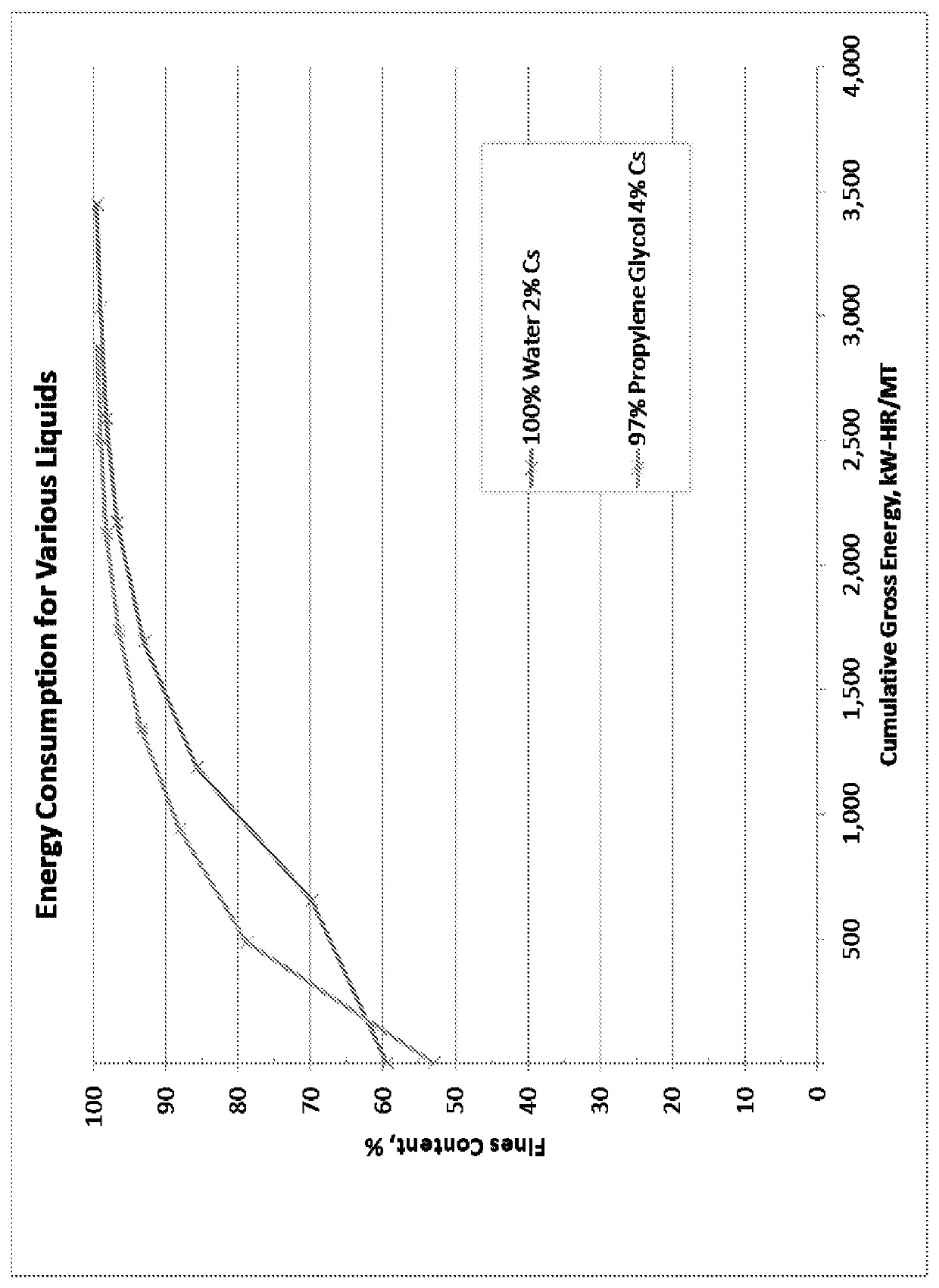Methods for the production of high solids nanocellulose
a nanocellulose and nanocellulose technology, applied in the field of high solids nanocellulose production, can solve the problems of reducing the use rate and limiting the ability to concentrate material effectively, and achieve the effects of enhancing the dispersion of cnf, improving nanocellulose distribution, and enhancing properties
- Summary
- Abstract
- Description
- Claims
- Application Information
AI Technical Summary
Benefits of technology
Problems solved by technology
Method used
Image
Examples
example 1
Methods
[0058]In this Example, pulp sheets, with a nominal moisture content of 10%, were manually shredded and then disintegrated with a Thomas-Wiley Laboratory mill (Model No. 4) producing a fibrous powder. For each example, a total of 220 gms of the fibrous powder was dispersed in 10,780 grams of liquid, most commonly water, to form a uniform slurry with a consistency of 2.0% fiber. The slurry was then pumped through an ultrafine lab grinder (Masuko super mass colloider laboratory model). The slurry was continuously recirculated through the ultrafine lab grinder until a slurry of cellulose nanofibrils (CNF) with a fines content of approximately 85% or higher, as measured using a fiber morphology analyzer (TechPap Morphi Fiber Analyzer), was produced. The gap between the two ceramic grinding stones was manually adjusted throughout the process, typically for 2 hours or more, to maintain the gap between the stones as small as possible without clashing. Without wishing to be held to a ...
example 2
ced in 88 wt % Lactic Acid
[0062]In this example, CNF is produced using a mixture of 88 wt % lactic acid and 12 wt % water as the liquid phase in the slurry. 202 gms of SFK-90 fiber, otherwise prepared as described in Example 1, was dispersed in approximately 10,780 grams of the lactic acid / water mixture as the liquid phase to produce a 2% solids slurry. Table 2 show the increase in % fines as a function of time. The temperature of the slurry was also recorded.
[0063]
TABLE 2Production of CNF using 2% SFK-90pulp in 88% Lactic Acid & 12% WaterTimeTemperature(minutes)(C.)% Fines02045.4152456.5303263.5453369.6603472.4753475.5903579.61053582.11203683.41353685.5
[0064]After the run, a sample of slurry was formed into a wet pad by mixing 200 grams of ethanol with 200 grams of slurry with a lab mixer (Silverson Hi Shear Lab Mixer Model L 5M) for about 25 seconds at approximately 5000 rpm. The mixture was the filtered through a Buchner funnel and filter paper forming a wet pad. This first filtr...
example 3
ced in Lactic Acid
[0069]In this example, an 88% lactic acid / 12% water mixture was placed in an oven at 110° C. until all of the water was evaporated. 195 grams of SFK-90 fiber, otherwise prepared as described above in Example 1, was blended with 9,880 grams of the dried lactic acid producing a 2% solids fiber slurry. The fiber slurry was then processed in the ultrafine grinder as in Example 1. Table 4 shows the increase in % fines as a function of time. The temperature of the slurry was also recorded.
[0070]
TABLE 4Production of CNF using 2% SFK-90 pulp in 100% Lactic AcidTimeTemperature(minutes)(° C.)% Fines02045.8154464.2305374455877.2606181.7756285.2906386.71056588.11206790.11357090.7
[0071]After the run, a sample of slurry was formed into a wet pad by mixing 200 grams of ethanol with 200 grams of slurry with a lab mixer (Silverson Hi Shear Lab Mixer Model L 5M) for about 25 seconds at approximately 5000 rpm. The mixture was the filtered through a Buchner funnel and filter paper for...
PUM
| Property | Measurement | Unit |
|---|---|---|
| water content | aaaaa | aaaaa |
| boiling temperature | aaaaa | aaaaa |
| wt % | aaaaa | aaaaa |
Abstract
Description
Claims
Application Information
 Login to View More
Login to View More - R&D
- Intellectual Property
- Life Sciences
- Materials
- Tech Scout
- Unparalleled Data Quality
- Higher Quality Content
- 60% Fewer Hallucinations
Browse by: Latest US Patents, China's latest patents, Technical Efficacy Thesaurus, Application Domain, Technology Topic, Popular Technical Reports.
© 2025 PatSnap. All rights reserved.Legal|Privacy policy|Modern Slavery Act Transparency Statement|Sitemap|About US| Contact US: help@patsnap.com

